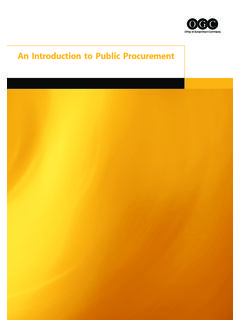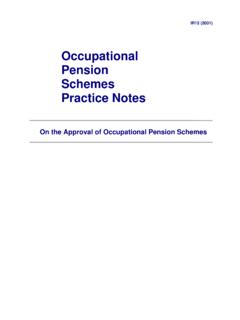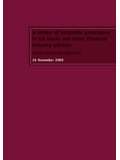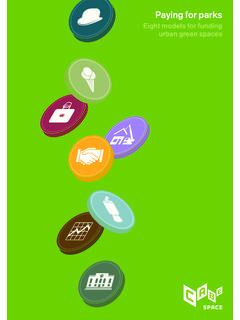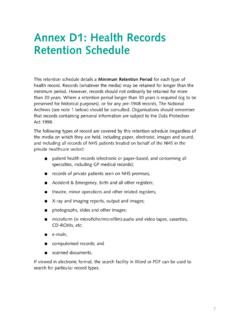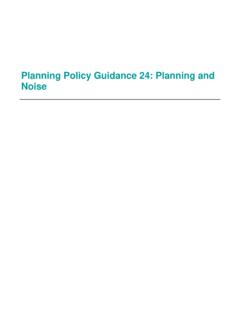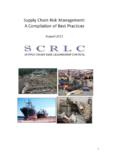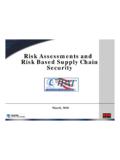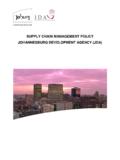Transcription of Supply Chain Management in Public Sector …
1 Supply Chain Management in Public Sector procurement: a guide June 2006. Contents 2. Page 1 Outline of this guide 5. 2 What is Supply Chain Management ? 7. 3 Why is Supply Chain Management important? 9. 4 What do Supply Chains look like? 14. 5 When to consider Supply Chain Management 17. 6 Background 33. 7 Consultation 36. 8 Related links 37. 9 Terminology 42. Supply Chain Management in Public Sector procurement: a guide 1. Outline of this guide 3. What do we mean by Supply Chain Management ? In the context of this guide, Supply Chain Management is concerned with the co- ordination of all parties involved in delivering the combination of inputs, outputs or outcomes that will meet a specified Public Sector requirement.
2 Purpose of this guide To provide a series of key insights into the Management of multi-tiered Supply relationships within the government procurement environment. The aim is to encourage contracting authorities to take a more sophisticated approach to Supply Chain Management and understand both the role that they and their main suppliers must play in managing the Supply Chain . Target audience Supply Chain Management needs consideration at a strategic level and the target audience for this guide is primarily those who take strategic decisions on procurements, programmes and projects in both central government and the wider Public Sector .
3 In addition, those who implement such decisions will find this guide useful, including individuals involved in contract, commercial and supplier Management as well as project and programme managers. This guide signals a change in attitude to Management of the Supply Chain in the Public Sector and its messages are also targeted at suppliers to the Public Sector Key messages Strike a balance Effective Supply Chain Management is a question of allocating Management of the Supply Chain to the parties best placed to understand and co-ordinate the activities of organisations involved in contract delivery. Just as a contracting authority should not automatically seek to manage the entire SC itself, the authority should not assume that transferring the whole responsibility for the Supply Chain to a sole party will automatically deliver the most benefit.
4 Wider benefits Increased openness, transparency and efficiency in the Management of Public Sector Supply chains can offer benefits to all parties involved in delivering Public services. In particular: 4. For contracting authorities: Improved ability to identify strengths, weaknesses, opportunities and threats in their Supply chains. Increased value for money and efficiency. For existing/potential subcontractors: Better visibility of the routes available to gain access to opportunities in the Public Sector . Improved communications with contractors and, where appropriate, Public Sector clients For main contractors: Improved early and ongoing communications with Public Sector clients.
5 More competitive subcontractor base offering better skills, expertise, innovation and value for money. 2. What is Supply Chain Management ? 5. There is no commonly accepted definition of Supply Chain Management - it means many different things to many different people and numerous, overlapping definitions exist. This guide presents its own high-level definition that sets the concepts within the specific context of Public Sector procurement. The Supply Chain is the combination of all Related Link parties ( external suppliers, partner organisations, internal corporate services units) Input/Output/Outcome are defined both inside and outside the organisation, in the Risk Allocation Model - involved in delivering the inputs, outputs or Introduction outcomes that will meet a specified Public Sector requirement.
6 Supply Chain Management is the co-ordination of all of these parties. The Supply Chain may be inbound into the Public Sector an operational requirement for internal customers for example, or it may be outbound from the Public Sector in place to deliver wider organisational objectives to provide services for delivery to citizens, or a combination of both. This relationship is highlighted in Figure 1. External Customer Internal Customer S INPUT. Operational S INPUT. Wider, external S objective new S objective teaching DELIVERIN. DELIVERIN. OUTPUT IT system to OUTPUT materials to student, support HR service training for unemployed S S.
7 G. G. delivery, office person to help them get S OUTCOME S OUTCOME back to work building for employees INBOUND Supply Chain OUTBOUND Supply Chain . S = Supplier Figure 1: Inbound and outbound Supply chains The shape of the Supply Chain and the Supply Chain Management processes employed will vary considerably depending on a range of different considerations. What might be some of the different characteristics of Supply chains (SCs) and Supply Chain Management (SCM)? 6. SCs can be inbound to the Public Sector suppliers delivering goods and services into the organisation to support its operational objectives office furniture provision for a Public Sector organisation.
8 SCs can be outbound from the Public Sector directly supporting the meeting of end customers' needs suppliers delivering Public Sector -funded external training programmes to unemployed individuals to assist them in getting back into work. SCs can be fully integrated, networks of interconnected companies with common performance and relationship Management processes, or they could be characterised by arms length contractor-subcontractor relationships. Each link within the Chain can differ in the nature of the interdependencies and the way in which the relationship SCs can be long-term, strategic sets of relationships between multiple, diverse organisations which are carried from project to project, or they can be ad-hoc structures established post-contract award to deliver a discrete, one-off The focus of SCM can differ from government Sector -to- Sector .
9 In the health Sector , the focus may be more on logistics and the effective movement of goods and services in and out of hospitals whereas SCM in the education Sector may focus on The focus of SCM can differ from industry Sector -to- Sector . In construction, the focus is on the early establishment of a fully integrated client-supplier project team. In IT projects, the focus may be on building scope for innovation and flexibility into the SC to cater for changing requirements and rapidly evolving information and Figure 2: Sample characteristics of Supply chains & Supply Chain Management 3. Why is Supply Chain Management important?
10 7. Supply chains and their associated Management processes often remain invisible to the Public Sector client. Government has traditionally focused on the contracting process with first tier suppliers the SC members with whom the procuring organisation directly contracts. The 2004 PAC Report on Improving departments' capability to procure cost-effectively' highlighted how only 17% of departments, agencies and non departmental Public bodies analyse their suppliers' Supply chains as part of their criteria for selecting suppliers and thus suffer from a lack of assurances about the reliability and resilience of their key suppliers' subcontractors.
